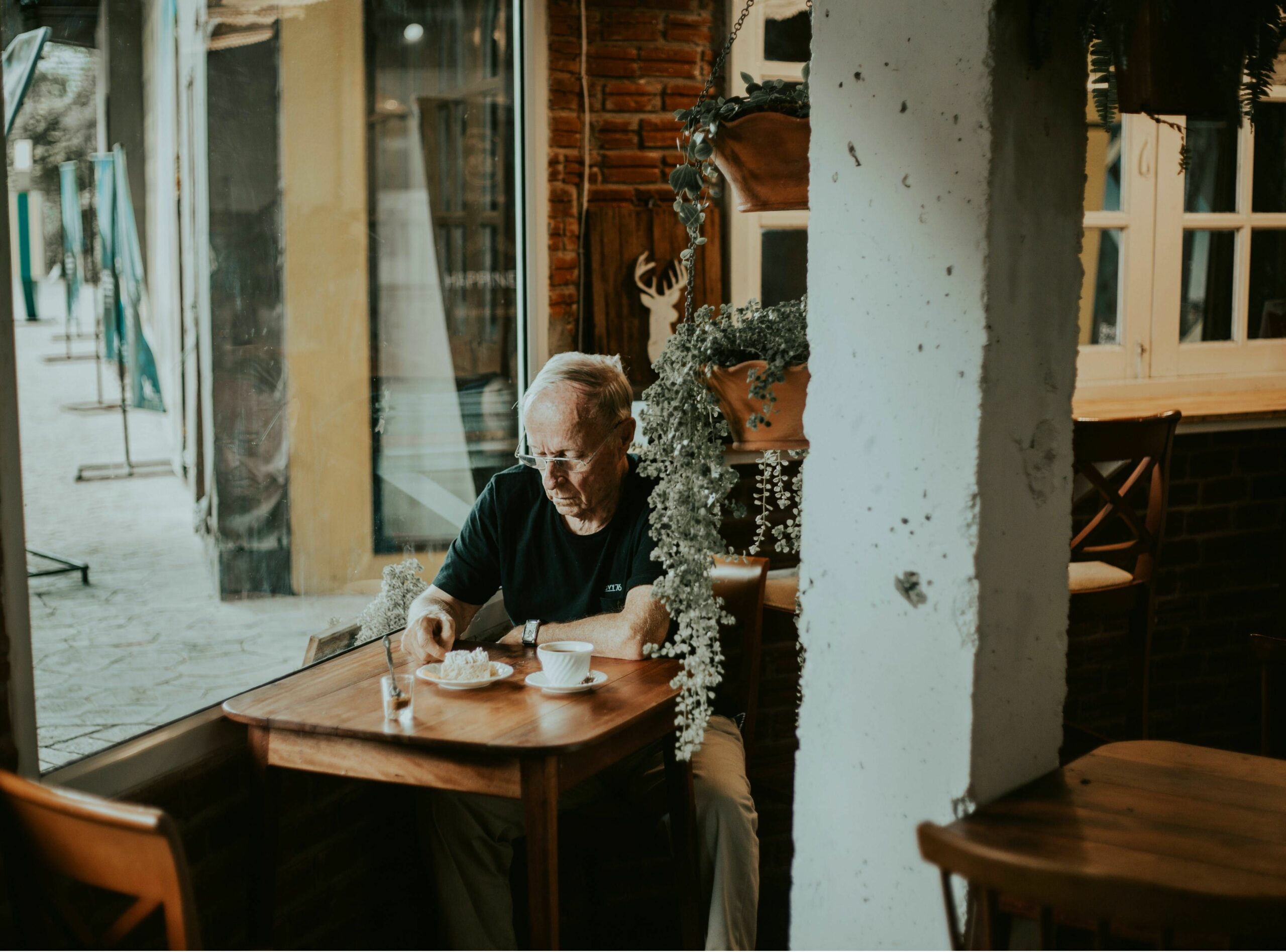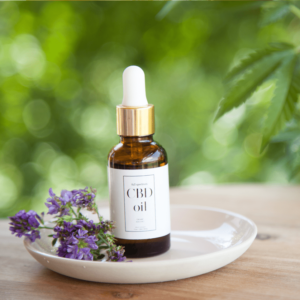Scientists have been investigating the endocannabinoid system in neurodegenerative diseases for many years. So, it’s no surprise that cannabis, which acts on this system, could have an important role to play in the treatment and management of Parkinson’s disease. While more studies—especially clinical trials—still need to be done, many Parkinson’s patients are already using cannabis to manage their symptoms, and others have begun to incorporate marijuana into their holistic approach to living with the disease.
FOLLOW US ON FACEBOOK & INSTAGRAM
What Is Parkinson’s Disease?
Parkinson’s disease is a disorder that originates in the substantia nigra—the part of the brain responsible for motor control. In the substantia nigra, there are nerve cells that normally produce dopamine, a neurotransmitter that regulates mood, behavior, sleep and cognition. In Parkinson’s disease patients, these cells become damaged and stop their production of dopamine—causing the body’s normal operations to go awry.
Parkinson’s disease is a chronic and progressive disorder, which means symptoms change and worsen overtime. Because early-stage symptoms such as insomnia and constipation often seem minor, Parkinson’s usually isn’t diagnosed until the disease has progressed significantly.
Once 60–80% of dopamine-producing nerve cells are damaged, patients begin to experience difficulty controlling movement; tremors and limb rigidity are often the most visible symptoms of Parkinson’s disease, but because dopamine regulates many facets of behavior, patients can also experience less visible symptoms like depression, anxiety and difficulty thinking. The rate of progression in the disease varies from patient to patient, and while Parkinson’s doesn’t often lead to death, loss of motor control and mental impairments can reduce quality of life and put the patient’s life in danger.
The cause of Parkinson’s disease is still largely unknown, though research suggests that genetic and environmental factors play a role. Currently, there’s no cure and treatment options usually involve surgery or medication to both manage symptoms and supply the body with dopamine. Every individual experiences Parkinson’s differently, and lifestyle changes can determine how well patients cope with this disease.
Who’s Most Affected With Parkinson’s Disease?
Parkinson’s disease is one of the most common neurodegenerative diseases in the United States, second only to Alzheimer’s. According to the Davis Phinney Foundation Parkinson’s disease affects one to one-and-a-half million Americans—that’s more than the number of Americans with multiple sclerosis, muscular dystrophy and Lou Gehrig’s disease combined—with 50,000–60,000 new cases being reported annually. Around the world, it’s estimated that seven to 10 million people are living with Parkinson’s, but none of these numbers take into account people who are experiencing symptoms but have yet to be diagnosed.
Parkinson’s disease affects about 1% of people over age 60, although most people living with Parkinson’s are older than 65. This disease is one-and-a-half times more common in men, with about 60% of those affected being male. Fifteen percent of people with Parkinson’s are under age 50, and 5% are under age 40—those diagnosed with Parkinson’s under age 50 are designated as having young onset Parkinson’s disease, which is usually characterized by a slower progression of the disease.
How Can Cannabis Help Those With Parkinson’s Disease?
Anecdotal evidence suggests that cannabis can play a role in helping those with Parkinson’s disease: A 2011–2012 study by Israeli researchers analyzed the effect of cannabis on motor and non-motor symptoms of Parkinson’s disease in 22 patients and revealed significant improvement in symptoms after only 30 minutes of smoking cannabis; and most recently, an October 2017 study in Clinical Neuropharmacology interviewed 47 patients with Parkinson’s and found that medical marijuana improved symptoms in the initial stages of treatment without major adverse effects.
RELATED: HOW CANNABIS HELPED ME FIND RELIEF FROM PARKINSON’S DISEASE
It’s not surprising that many patients report that cannabis alleviates their symptoms: Among those in the medical marijuana community, cannabis has long been known to help ease anxiety, depression, insomnia, muscle rigidity and pain—all of which are associated with Parkinson’s or are side effects of medications involved in a traditional treatment regimen for the disease.
Parkinson’s disease has no cure, so existing therapies can only relieve symptoms or supply the body with dopamine—none address the destruction of dopamine-producing neurons, which is the root cause of the disorder. The neuroprotective qualities of cannabis and cannabinoids may provide guidance to future research:
-
In a mice cell culture, researchers found that THC and THCA can protect the brain cells that make dopamine from neurotoxins. Moreover, THC, or tetrahydrocannabinol, has been shown to have further neuroprotective properties in a study that involved a human cell culture.
-
Cannabidiol (CBD) is also neuroprotective, but likely by way of a different mechanism than seen in THC. In rats, CBD protects brain cells that project into the substantia nigra—the part of the brain that’s affected in Parkinson’s disease and other neurological diseases.
The extensive reports of positive patient experiences combined with promising pre-clinical research has led scientists and patients to advocate for more in-depth studies on what role cannabis can play in this debilitating disease.
How Does Marijuana Complement Traditional Therapies in Parkinson’s Disease?
Conventional therapeutic approaches to Parkinson’s disease usually involve a combination of surgery and medications to address symptoms and supply the body with dopamine. However, patients can undertake a number of lifestyle changes to improve their quality of life. Research and experts in this disease advocate for sleeping well, eating well and engaging in regular exercise—all of which cannabis can help support.
Getting adequate sleep is an essential component to any healthy lifestyle, but people with Parkinson’s often suffer from insomnia due to many factors, including pain, side effects from medications, and psychological issues such as anxiety and depression. Preliminary research suggests that CBD can help treat insomnia, while THC can help you fall asleep faster, but may also have an effect on the quality of sleep. However, plenty of cannabis users report having success treating insomnia with the use of either THC or CBD, or even both—it all depends on the user.
Inflammation of nerve cells in Parkinson’s disease is thought to contribute to the degeneration of dopamine producing neurons in the brain—thus, research indicates that decreasing inflammation in affected areas may help slow progression of the disease. Moreover, the carbidopa-levodopa drug combination often used to help with symptoms of Parkinson’s disease often leads to a slew of side effects, including dyskinesia and triggering more inflammation in the body. Therefore, a diet rich in antioxidants and aimed at reducing inflammation may be beneficial to Parkinson’s patients. And incorporating cannabis—which has anti-inflammatory and neuroprotective properties—into this regimen may also be helpful.
Visit the webpage of any organization or foundation dedicated to Parkinson’s disease, and you’ll notice it touting the benefits of an exercise regimen. Studies show that regular exercise can be neuroprotective and neurorestorative—in other words, exercise may help slow or even reverse disease progression.
Some professional athletes use cannabis in their training regimen because its anti-inflammatory nature helps them recover after an intense workout. Likewise, consuming cannabis post-workout may help some Parkinson’s patients in the same way.
Effective Cannabis Consumption Methods & Dosages for Parkinson’s Disease
While plenty of evidence points to cannabis’s place in a Parkinson’s disease therapy regimen, there’s no recommended dosage in helping treat the symptoms of the disease. Like most conditions and symptoms that respond well to cannabis, it all comes down to the individual user. Because Parkinson’s is a progressive disease, even if you were to find a cannabis regimen that worked for you, you may discover that as the disease changes, so will your needs in terms of cannabis dosage.
Liz Rudner, a holistic wellness expert who works with Parkinson’s patients and the co-founder of MoonMan’s Mistress, a company that produces healthy edibles, says she’s found that her clients need a solid 10 mg of THC daily, along with 15–25 mg CBD. She also notes that CBD tends to help her clients find daytime relief. However, she also emphasizes that every person’s biochemistry is different.
“This might work for you, but it might not work for the next person—or this might work for you right now, but you might get to a point where your body doesn’t want anymore, and you’re going to have to find something else,” she says.
The general rules of cannabis dosing apply to this disease: Start small and increase until the desired effect is achieved. If you’re looking for immediate relief from a certain symptom, smoking or vaping brings about effects more quickly. Ingesting cannabis in edible or tincture form will provide longer-lasting relief, but effects may take up to an hour to kick in.
Photo credit: Soragrit Wongsa
If you’re new to cannabis and want to learn more, take a look at our Cannabis 101 post. HelloMD can help you get your medical marijuana recommendation; it’s easy, private and 100% online.






